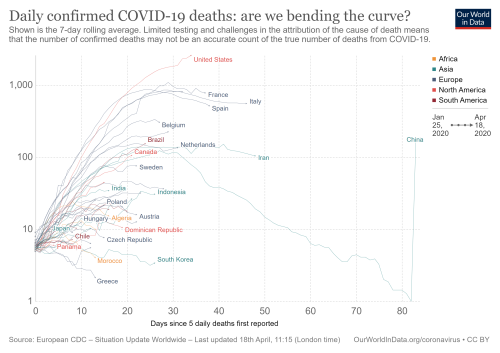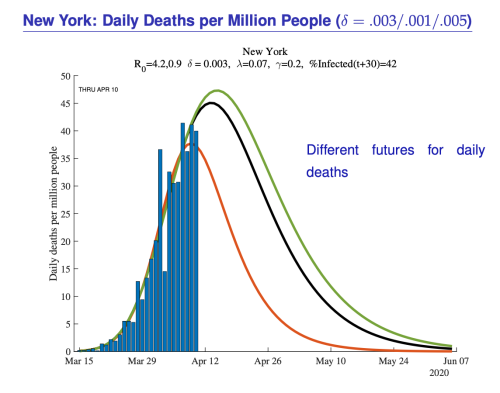While over-flowing ICU rooms suggest the disease is rampant, with such a high potential reproductive rate, you would expect the disease to peak very quickly and then die just as quickly because it would exhaust the pool of potential victims earlier. While flu cases are more likely to be spread over a long period, you'll see more COVID-19 cases earlier, which could mean fewer later, so similar numbers over the course of a year to flu, just a different trajectory. But the only way we can get a handle on this is by testing representative samples of communities so we pick up people who are asymptomatic, as well as those who have recovered. With some exceptions that testing is not happening.
But if warmer weather suppresses the virus, then you might see fewer ealier on, and then a surge once you get into colder weather in winter. Perhaps the effects of the disease are also milder in warmer weather. In which case Australia's figures may be nothing to boast about and merely the prelude to the storm. In which case we could have allowed it to spread before the flu season using the climate as a natural moderator on its initial severity..
Are enough people getting sick?
This is the core of my concern, and I understand is challenging for those who have characteristics that make them more likely to catch the disease, but needs to be talked about nevertheless. When you look at the statistics for Sweden, which has been criticised for not locking-down, its figures are now dramatically improving. The chart below shows a rolling 7 day count of deaths per million. While things were pretty dire in Italy and Spain their numbers are coming down, and they should be able to go back to normal, more or less COVID-free, in a fairly short time. The same applies to Sweden. Unless Australia loosens up its restrictions, it won't apply to us.
Advertisement

click here Some of those curves look pretty similar to the ones being predicted for New York by Jesús Fernández-Villaverde and Chad Jones, which I sourced from The Grumpy Economist.

The death rate might look high, but what needs to be taken into account is what happens over a longer period, say a year. It is impossible to know, but given the average age of people succumbing at over 80 years of age, there is a good chance that many might not have made it through a twelve month period in any event.
How many deaths is too many?
The last thing I want to deal with is the implicit trade-off that we are making when we prioritise something above almost everything else - in this case treatment of people with COVID-19. It means that something else has to be neglected. Even with the low level of infection in Australia there has been a huge diversion of resources towards a potential inundation of COVID cases. If the inundation had arrived, then there would have been a further diversion of resources. As the curves above demonstrate, this would probably have been for an intense two month period. We've traded the two months off against something much longer.
Advertisement
In the process we have also shut the economy down, unlike a number of other countries like Sweden, Singapore, Japan and South Korea. Shutting the economy down pushes costs away from those most likely to get COVID, to those less likely, which includes people in the workforce. We tend to think of the death rate from the virus in absolute terms - it has killed x number of people. A more sophisticated way of looking at it, but much harder to accurately gauge, is that it has shortened their lives. When you look at mortality rates through the lens of lifespan, they look entirely different. So if a young person commits suicide because of the depression we are creating to fight COVID, then his length of life foregone could be many multiples of the average victim, who is aged over 80. Added to that are quality of life issues. What if the 80 year old has dementia and is bed-ridden?
And then there is the general shortening of life that poverty causes. So a depression will cause younger people to have a shorter life than they otherwise would, in a mirror reflection of the shortening of life of older people. It's not happening at the same time, but it is happening nevertheless.
Paul Fritjers has put these issues and more together in a concept called WELLBYS, which he blogs about here. He concludes:
Discuss in our Forums
See what other readers are saying about this article!
Click here to read & post comments.
87 posts so far.